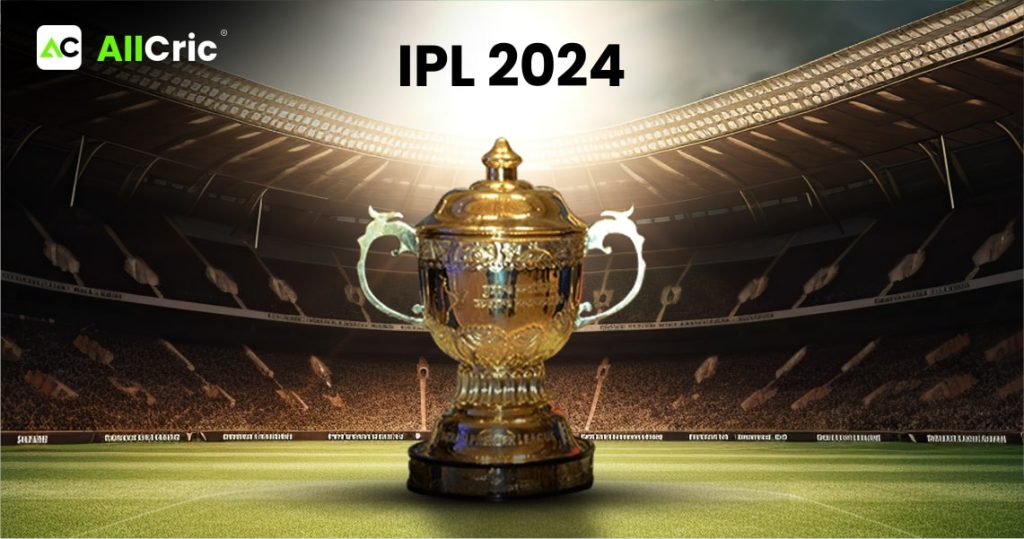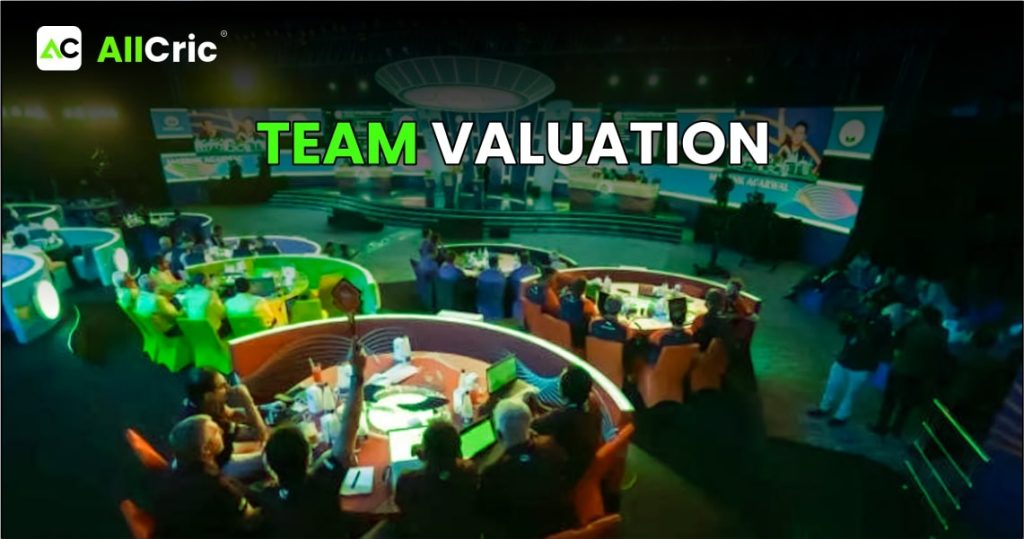IPL: Global Growth, Impact, and Future Prospects
India is the second most populous country in the world. This nation holds cricket as its most cherished sport ever. Last year, a staggering 130 million individuals tuned in to watch the IPL online, offering a basis for approximating the extent of IPL’s popularity in India.
Did you catch the IPL matches? Have you ever wondered about the mechanisms through which the IPL generates revenue and the complexity of its business model?
In this article, we’ll delve into the revenue generation strategies and the business model of the IPL T20 live, shedding light on how it sustains its financial expertise.
What do you understand by IPL?

The Indian Premier League (IPL), which kicked off in 2008, took place across 10 different Indian states, featuring teams representing each state. Lalit Modi, the brain behind IPL, came up with the idea after noticing the immense craze for cricket in India. Recognizing the nation’s enthusiasm for the sport, he pitched his vision of a domestic league to the Board of Control for Cricket in India (BCCI), proposing a format that enabled each team to include up to five foreign players. The Indian Premier League (IPL) has gathered a brand value of US$3.2 billion as of 2021, engaging several broadcasters, with Star Sports being one of them.
Revenue Streams

- Team Ownership: Franchise owners invest meaningful amounts to acquire and manage teams, like the Mumbai Indians and the Royal Challengers Bangalore, generating revenue through team management, player acquisition, and marketing.
- Player Auction: Before each IPL season, teams participate in player auctions, creating a competitive environment and enabling players to earn salaries from their teams.
- Broadcasting Rights: The sale of broadcasting rights generates remarkable revenue, with global broadcast rights alone generating over a billion dollars. Broadcasters also earn by reselling parts of these rights.
- Sponsorships: IPL franchises secure sponsorship deals with various brands, including apparel, beverage, and mobile phone companies, providing funds to cover expenses.
- Ticket Sales: Revenue is generated from fans purchasing tickets to watch matches live at stadiums, particularly in venues like the Narendra Modi Stadium in Ahmedabad.
- Merchandise and Fan Engagement: Franchises earn from sales of team jerseys, caps, and accessories, capitalizing on the substantial demand for IPL merchandise.
- Advertising: Companies pay for advertising slots during matches, including commercial breaks and digital advertising, to reach large and engaged audiences.
- Franchise Fees: Teams pay annual franchise fees, providing a consistent revenue stream for the IPL.
- Digital Rights: The IPL sells digital rights to streaming platforms, attracting viewers who prefer to watch matches online.
Team Valuations and Ownership

- Brand Value: Successful IPL teams become iconic brands with a gigantic fan following and massive brand recognition, contributing to their high valuations. Teams like the Mumbai Indians and Chennai Super Kings have built a strong brand identity over the years through frequent performance and strategic marketing efforts.
- Revenue Potential: IPL teams have multiple revenue streams involving broadcasting rights, sponsorships, merchandise sales, ticket sales, and advertising opportunities. The potential for remarkable revenue generation attracts investors and drives up team valuations.
- Player Talent: The presence of star players and international cricketing icons in IPL teams adds to their appeal and market value. Teams with a powerful roster of talented players command higher valuations due to their competitive edge and ability to engage fans and sponsors.
- Market Demand: The popularity of cricket in India, coupled with the huge fan following of the IPL, creates a high demand for team ownership. Investors are willing to pay premium prices to acquire IPL teams due to the massive market potential and growth opportunities.
- Strategic Investments: Corporate giants and wealthy individuals often invest in IPL teams as part of their broader business strategy to increase brand visibility, engage with consumers, and diversify their investment portfolios. Their involvement brings financial stability, resources, and expertise to the teams, further driving up their valuations.
- Franchise Owners: IPL teams are owned by various entities, including business conglomerates, celebrities, and consortiums. For example, the Mumbai Indians are owned by India’s largest conglomerate, Reliance Industries, while the Kolkata Knight Riders are co-owned by Bollywood superstar Shah Rukh Khan, actress Juhi Chawla, and businessman Jay Mehta.
- Corporate Involvement: Several IPL teams have strong collaboration with corporate giants, either through direct ownership or sponsorship deals. Corporate entities often leverage IPL teams as a marketing platform to promote their brands, products, and services to a vast audience. For instance, the Royal Challengers Bangalore is sponsored by United Spirits Limited, while the Delhi Capitals have partnerships with JSW Group and GMR Group.
- Strategic Partnerships: Many IPL teams collaborate with corporate partners to drive revenue growth and enhance their market presence. These partnerships often involve joint marketing campaigns, product endorsements, and promotional activities aimed at maximizing brand exposure and generating additional revenue streams.
Impact on the Indian Economy
The Indian Premier League (IPL) significantly contributes to the Indian economy by creating jobs, boosting tourism, and encouraging infrastructure development. The league generates employment opportunities in various sectors, including sports management, event organization, and hospitality services. Additionally, IPL matches engage domestic and international tourists, bracing the hospitality and tourism industries. The event also drives infrastructure development in host cities, with investments in stadiums, transportation, and accommodation facilities. Moreover, the IPL’s popularity fuels the demand for media coverage and advertising, benefiting the media and advertising sectors. Overall, the IPL’s influence extends across multiple sectors, contributing positively to India’s economic growth and development.
Global Expansion and Reach
The IPL cricket live t20 match sets itself apart from other cricket leagues by adopting a franchise-based structure, with teams representing cities and now extending their influence worldwide. Here are the key factors fuelling its global expansion:
- Unique Format: The IPL’s franchise-based model fosters diversity and intense competition, attracting players from around the world.
- Global Player Appeal: International stars like Chris Gayle and AB de Villiers have strengthened the league’s popularity, attracting fans from their home countries.
- Broadcasting Rights: The IPL’s broadcast in over 120 countries by major media companies like Star Sports and Sony has widened its global reach.
- Revenue from Media Rights: Media rights, fetching a staggering $2.5 billion in 2021, has fuelled the league’s growth and expansion efforts.
- New Audience Engagement: Leveraging broadcasting partners’ networks, the IPL has introduced cricket to new audiences worldwide.
- Brand Partnerships: Partnerships with major brands like Pepsi and Amazon have boosted the IPL’s visibility and reach.
- Innovative Campaigns: Collaborative initiatives with sponsors, like the Vodafone Superfan and Dream11 Gamechanger, have enhanced fan engagement.
Challenges and Future Trends
The IPL faces several challenges involving player tiredness, conflicts in scheduling, and other controversies. Player debility arises from the meticulous schedule of matches, often leading to concerns about injuries and burnout among players. Scheduling conflicts with international cricket calendars pose logistical difficulties, as the IPL overlaps with other tournaments, limiting player accessibility and potentially affecting team compositions. Controversies, such as match-fixing scandals and governance issues, tarnish the league’s reputation and undermine its integrity.
Emerging trends in the business of IPL include the increasing influence of digital media and new technologies. The league has embraced digital platforms for broadcasting matches, engaging with fans, and delivering content. With the rise of social media and streaming services, the IPL cricket live score leverages these channels to reach a broader audience and enhance fan interaction. Furthermore, advancements in technology, such as data analytics and virtual reality experiences, offer innovative ways to enhance the viewer experience and drive revenue. Overall, while the IPL faces challenges, it also adapts to evolving trends in the digital landscape to sustain its growth and relevance in the sports industry.
Conclusion
The business of IPL revolves around its franchise-based model, which attracts investments from industrialists and celebrities. Revenue streams include broadcasting rights, sponsorships, ticket sales, and merchandise. The league’s economic impact extends to job creation, tourism, and infrastructure development. Despite challenges like player exhaustion and scheduling conflicts, the IPL embraces digital media and technology to enhance fan engagement. With its worldwide reach and unique initiatives, the IPL is poised for continued growth. As it expands to new markets and explores digital avenues like the AllCric cricket application for T20 cricket live coverage, live commentary, and latest news updates, the league’s future promises sustained success and prosperity.
